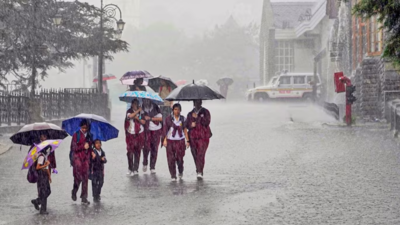ARTICLE AD BOX

The Punjab government announced on Wednesday that all schools across the state will remain closed until September 7, following relentless heavy rainfall and widespread waterlogging, Minister Harjot Singh Bains confirmed.
Earlier, the administration had extended closures until September 3, with additional holidays observed from August 27 to 30 as flooding worsened. The decision reflects mounting concerns over student safety amid one of the most severe natural disasters in decades.
All districts declared flood-affected
According to the latest government bulletin, all 23 districts in Punjab have been officially declared flood-hit. The current floods are being described as the worst since 1988, claiming 30 lives and impacting nearly 3.5 lakh people.
Rivers including the Sutlej, Beas, and Ravi, along with seasonal rivulets, have swollen to dangerous levels following heavy rainfall in Himachal Pradesh and Jammu and Kashmir, submerging large areas in their downstream catchments.
Villages and towns submerged
Over 1,400 villages have been affected, with Pathankot recording the highest death toll at six. The rising waters have disrupted transportation, inundated homes, and devastated farmland, leaving communities struggling for essentials.
Emergency services face logistical challenges reaching remote areas as rivers breach their banks and roads remain submerged.
Massive evacuations underway
Authorities have evacuated approximately 20,000 residents from the worst-hit areas to safer locations. The state governor and Chief Minister visited several flood-affected regions on Tuesday, inspecting damage and overseeing relief operations. Despite these efforts, continuous rainfall and swollen rivers are hindering rescue work and threatening further displacement.
Socio-economic fallout
The floods have triggered severe socio-economic consequences. Schools remain shuttered, transport networks are paralyzed, and critical public services are stretched thin. Experts warn that ongoing rainfall may escalate both humanitarian and economic damage, potentially exceeding past flood crises in Punjab. The disaster highlights the urgent need for better disaster preparedness and climate-resilient infrastructure.
Government response and challenges ahead
Punjab’s administration faces intense pressure to coordinate rescue operations, provide relief, and rehabilitate displaced populations. Health authorities are monitoring potential outbreaks of waterborne diseases, while disaster management teams distribute supplies and maintain emergency shelters. The floods serve as a stark reminder of the vulnerability of the state’s infrastructure and the urgent requirement for effective river management and early warning systems.



.png)
.png)
.png)
















 19 hours ago
2
19 hours ago
2








 English (US) ·
English (US) ·